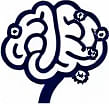Nudge Theory: Guiding Choices with Subtle Insights
 by Verner Mayer
by Verner Mayer
Nudge Theory offers a way to influence decisions through small, thoughtful changes. Originating from behavioral economics, it helps shape better choices in daily life, business, and policy without force. Explore its applications and benefits for personal and professional growth.

Nudge Theory stands as a key concept in behavioral science, providing tools for shaping decisions in everyday scenarios. This approach focuses on gentle prompts that lead individuals toward improved outcomes. Nudge Theory draws from observations of how people often make choices based on habits rather than deep analysis.
In its core, this theory examines patterns in human behavior. For instance, it looks at how small environmental changes can alter actions without awareness. A classic example might involve rearranging options in a cafeteria to encourage healthier eating. Such adjustments highlight the role of cognitive biases, which are mental shortcuts that affect judgment.
The idea gained prominence through studies in psychology. Researchers noted that people frequently rely on automatic responses. By understanding these tendencies, one can create environments that support positive decisions. In business settings, companies use this method to improve employee productivity. For example, setting default options in software interfaces can guide users toward efficient workflows.
Practical applications extend to various fields. In public policy, governments implement strategies to promote safety. One might see this in road designs that naturally slow traffic. Education sectors also benefit, where simple classroom setups encourage student engagement. These examples show how the theory applies across contexts, from individual habits to larger organizational changes.
How Nudge Theory Works
At its foundation, the theory operates on principles of choice architecture. This involves structuring decisions to make certain paths more appealing. Key elements include defaults, which are pre-set choices that people tend to stick with. Another is framing, where the presentation of information sways perceptions.
Consider a scenario in health care. Doctors might present treatment options in a way that emphasizes benefits, leading patients to select better alternatives. Lists of pros can make this clear:
- Defaults: Automatic enrollments in programs like retirement savings plans.
- Social proof: Showing common behaviors to influence norms.
- Simplification: Reducing steps in processes to ease decisions.
Through these methods, the theory addresses common pitfalls in thinking. It helps mitigate errors that arise from routine mental processes.
Benefits for Cognitive Development
For lifelong learners, applying Nudge Theory can enhance personal growth. By recognizing internal patterns, individuals build awareness of their own decision-making. This leads to strategies that foster better habits over time.
In professional environments, leaders use these insights to build teams. For example, scheduling meetings at optimal times can boost participation. The approach also aids in innovation, where subtle cues spark creativity.
Critiques of the theory exist, pointing to potential ethical concerns. Some argue that prompts could manipulate rather than assist. Yet, when used responsibly, it offers valuable tools for positive change. Advocates stress the importance of transparency in implementation.
Real-World Impact
In daily life, anyone can apply Nudge Theory principles. Parents might arrange home spaces to promote reading among children. In workplaces, managers could redesign feedback systems for motivation. These adaptations demonstrate the theory's versatility.
Overall, engaging with this concept equips people with practical skills. It encourages reflection on how environments shape actions, leading to more informed choices in various aspects of life.
To wrap up, Nudge Theory provides an accessible framework for influencing behavior. Its relevance spans psychology, business, and beyond, offering ways to support development and decision-making.
